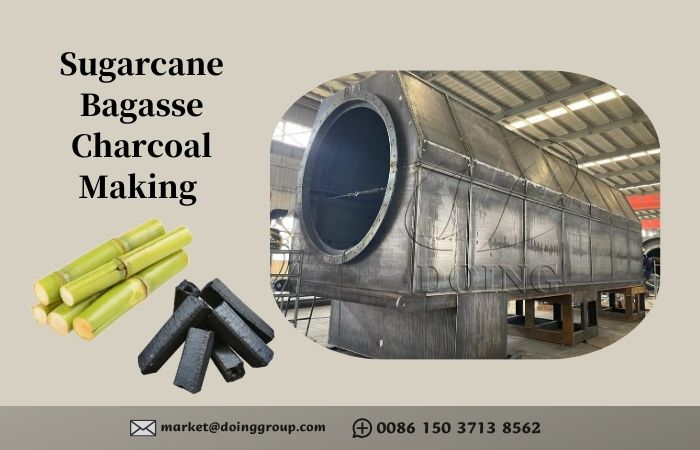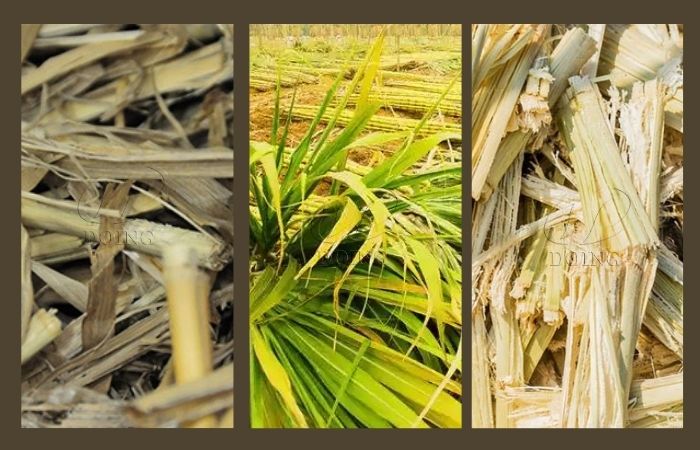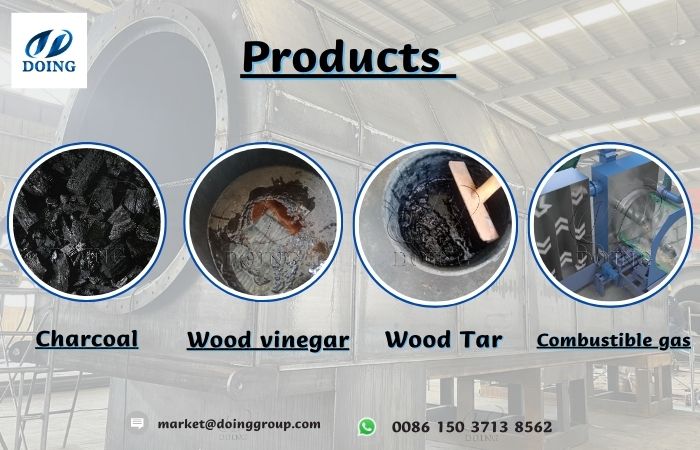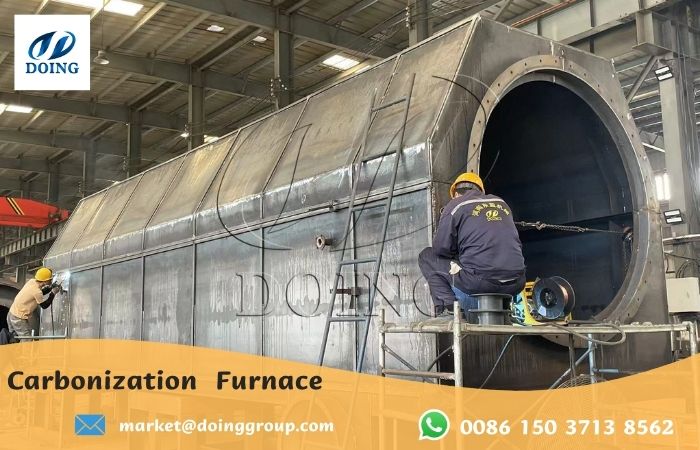 WhatsApp
WhatsApp

DOING HOLDINGS
Henan Doing Environmental Protection Technology Co., Ltd
E waste recycling machine manufacturer
- WhatsApp: +86 150 3713 8562
- Email: market@doinggroup.com
Can sugarcane bagasse be used to make biochar?
 December 12, 2024
December 12, 2024- FAQ
- Leave a message
- Chat online
Sugarcane bagasse is mainly composed of cellulose, hemicellulose, and lignin. It is a byproduct of sugarcane processing and has abundant reserves worldwide. In recent years, the potential of sugarcane bagasse to produce environmentally friendly, high calorific value biochar has been discovered and developed by Henan DOING: sugarcane bagasse can be converted into biochar through pyrolysis carbonization process.
 Sugarcane bagasse charcoal making
Sugarcane bagasse charcoal making
Some sugarcane waste suitable for producing biochar:
Sugarcane top: usually composed of green leaves, bundle sheaths and different amounts of immature sugarcane.
Sugarcane leaves: Sugarcane leaves are sugarcane waste usually produced during harvest.
Sugarcane bagasse: Sugarcane bagasse is the fibrous material remaining after extracting sugar juice. One ton of sugarcane produces about 275 kg of sugarcane bagasse.
 Sugarcane waste
Sugarcane waste
Biomass pyrolysis carbonization furnace sugarcane bagasse carbonization process
The biomass pyrolysis carbonization furnace uses the principle of high-temperature pyrolysis to convert sugarcane bagasse into biochar. The sugarcane bagasse carbonization process includes raw material pretreatment, pyrolysis carbonization, carbonization product treatment, tail gas treatment and other processes. The specific introduction is as follows:
Process 1: Sugarcane waste pretreatment
First collect the sugarcane waste, dry it naturally in the sun or use a drying furnace to reduce its moisture content to 15% or less. Then the dried sugarcane waste need to be crushed by a crusher, and the particle size is generally less than or equal to 20mm, which is convenient for subsequent pyrolysis and carbonization.
Process 2: Pyrolysis and carbonization
Load the pretreated sugarcane bagasse into the DOING biomass pyrolysis and carbonization furnace, start the carbonization furnace, and heat the sugarcane bagasse. After the temperature is controlled, the organic matter in the bagasse begins to pyrolyze, producing solid charcoal and combustible gas and other substances. After the pyrolysis process is completed, the solid biomass charcoal is cooled to avoid spontaneous combustion of the charcoal.
Process 3: Carbonization product processing
When the continuous carbonization furnace is cooled to room temperature, open the furnace door and take out the biomass charcoal. Biomass charcoal can be further processed, such as crushing, screening, etc., to achieve different application requirements.
Process 4: Tail gas treatment
A large amount of volatile gas and smoke and other tail gases will be generated during the pyrolysis carbonization process. These tail gases need to be treated to reduce pollution to the environment. Common tail gas treatment methods include combustion, adsorption, condensation, etc.
Using the pyrolysis carbonization process, the sugarcane bagasse is carbonized by DOING continuous carbonization equipment. The solid charcoal and liquid tar, combustible gas, etc. produced after carbonization can be widely used in industrial fuel, soil improvement, energy production, environmental protection and other fields. It not only avoids resource waste, but also protects the environment, and obtains environmental protection and economic benefits.
 Carbonization products
Carbonization products
If you want to establish a sugarcane bagasse charcoal production plant, DOING has collected some key factors for reference to ensure its success:
1. Site selection: In view of the heavy weight and large volume of sugarcane bagasse, it is recommended to be close to sugarcane planting areas or processing plants. Locating the factory near these areas can effectively reduce transportation costs.
2. Raw material supply: Sugarcane is widely grown in tropical and subtropical regions. Among them, countries such as Brazil, India, China and Thailand are the main producers. These areas are a stable source of bagasse supply.
3. Equipment investment: You can purchase the corresponding bagasse biomass pyrolysis plant according to the production scale and technical requirements. When choosing carbonization equipment, factors such as equipment stability, energy consumption and automation level should be considered. Reliable and efficient machines can improve production efficiency and reduce operating costs.
 Biomass pyrolysis carbonization furnace
Biomass pyrolysis carbonization furnace
In addition to carbonizing bagasse, the biomass pyrolysis carbonization furnace produced by Henan DOING can also carbonize various biomass raw materials such as straw, rice husks, coconut shells, trees, peanut shells, etc. DOING is committed to providing customers with efficient, energy-saving and environmentally friendly carbonization equipment to help every customer's career development. Interested investors are welcome to come for consultation!
Contact Us
- Email:
- Tel/WhatsApp:
News


Process Workflow and Equipment for Lithium Battery Recycling

Lithium-Ion Batteries Recycling Industry: Current Status and Future Prospects Review

DOING Signs Contract with Ghana Client for 5-Ton Biochar Production Equipment

The DOING Straw Continuous Charcoal Making Machine Process Principle and Process
Contact Us
If you want to get more details, you can send E-mail to market@doinggroup.com. Or you can consult our professional engineers and specialized sales team by leaving a message in below form. We will contact you ASAP.






